Abstract
Survival of Salmonella senftenberg 775W, S. anatum, and S. typhimurium during exposure to currently practiced, as well as abusive, pecan processing and storage conditions was studied. Thermal treatments normally carried out during the processing of pecans are inadequate to consistently destory salmonellae in highly contaminated inshell nuts. Pecan nut packing tissue was toxic to salmonellae, thus affording some protection against high initial contamination and subsequent survival of the organisms. Examinations of inoculated inshell pecans stored at -18, -7, 5, and 21 C for up to 32 weeks revealed that the extent of survival was inversely correlated to the storage temperature. S. senftenberg 775W and S. anatum were not detectable on inshell nuts after 16 weeks of storage at 21 C. Little decrease in viable population of the three species was noted on inoculated pecan halves stored at -18, -7, and 5 C for 32 weeks. Due to organoleptic quality deterioration in pecan nutmeats at elevated temperatures, sterilization methods other than thermal treatment appear to be required for the elimination of viable salmonellae from pecan nuts.
Full text
PDF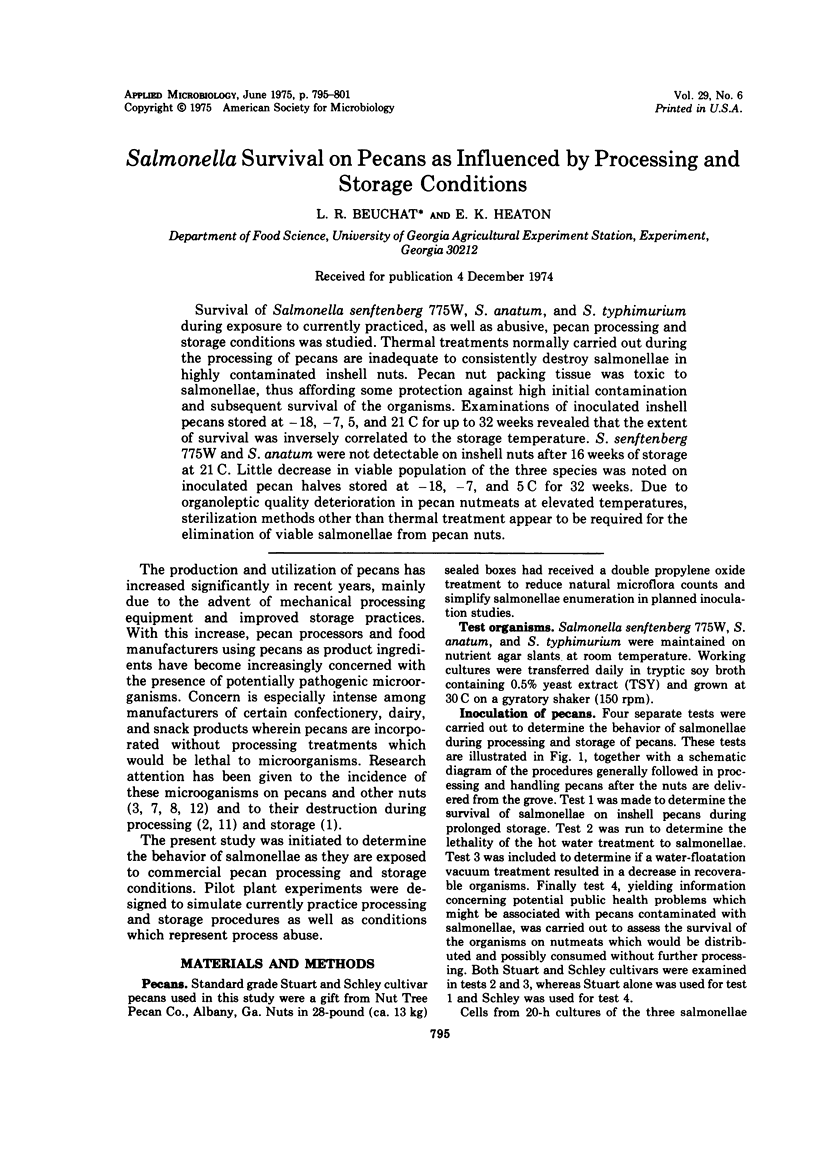
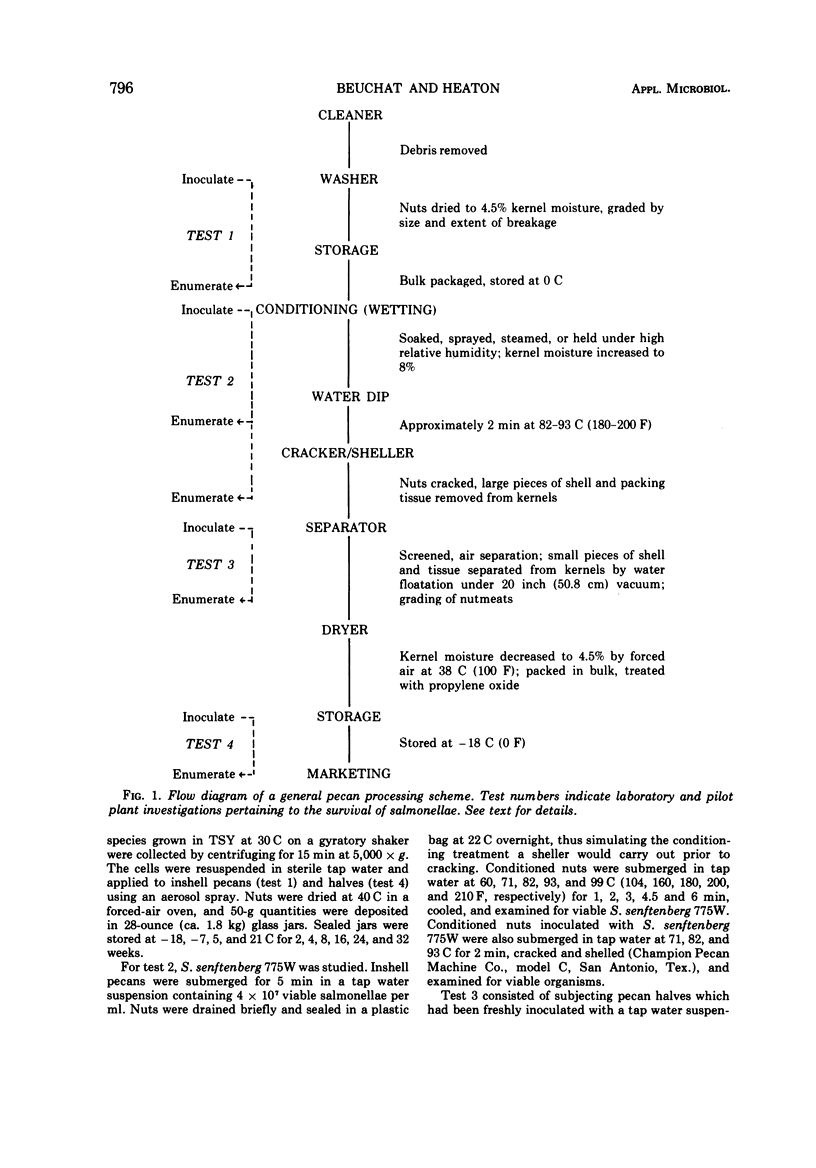
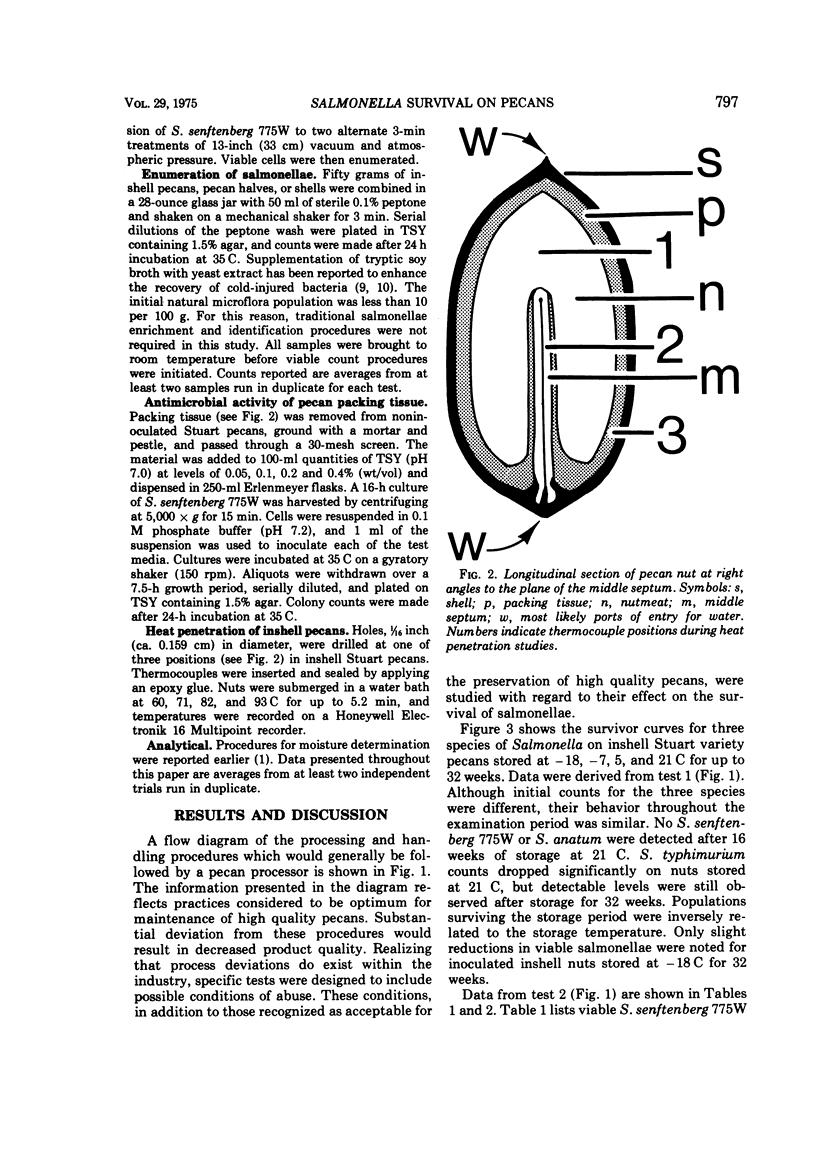
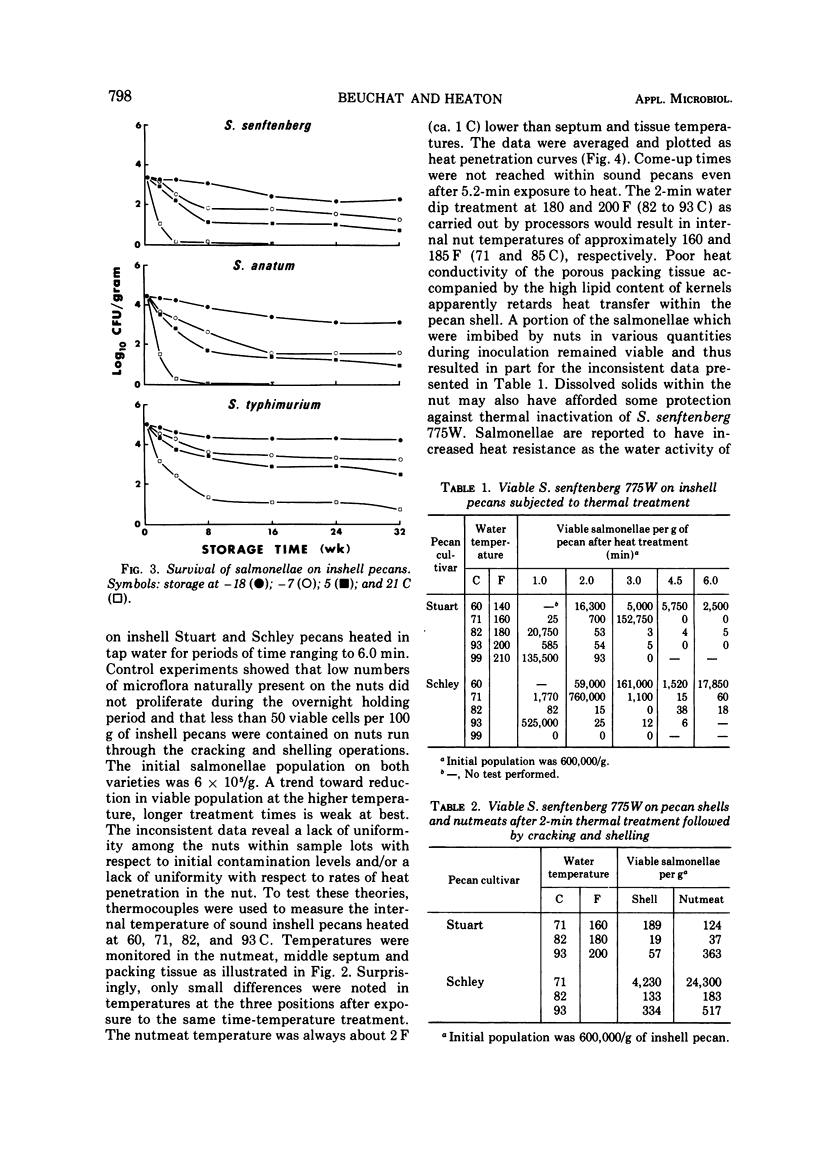
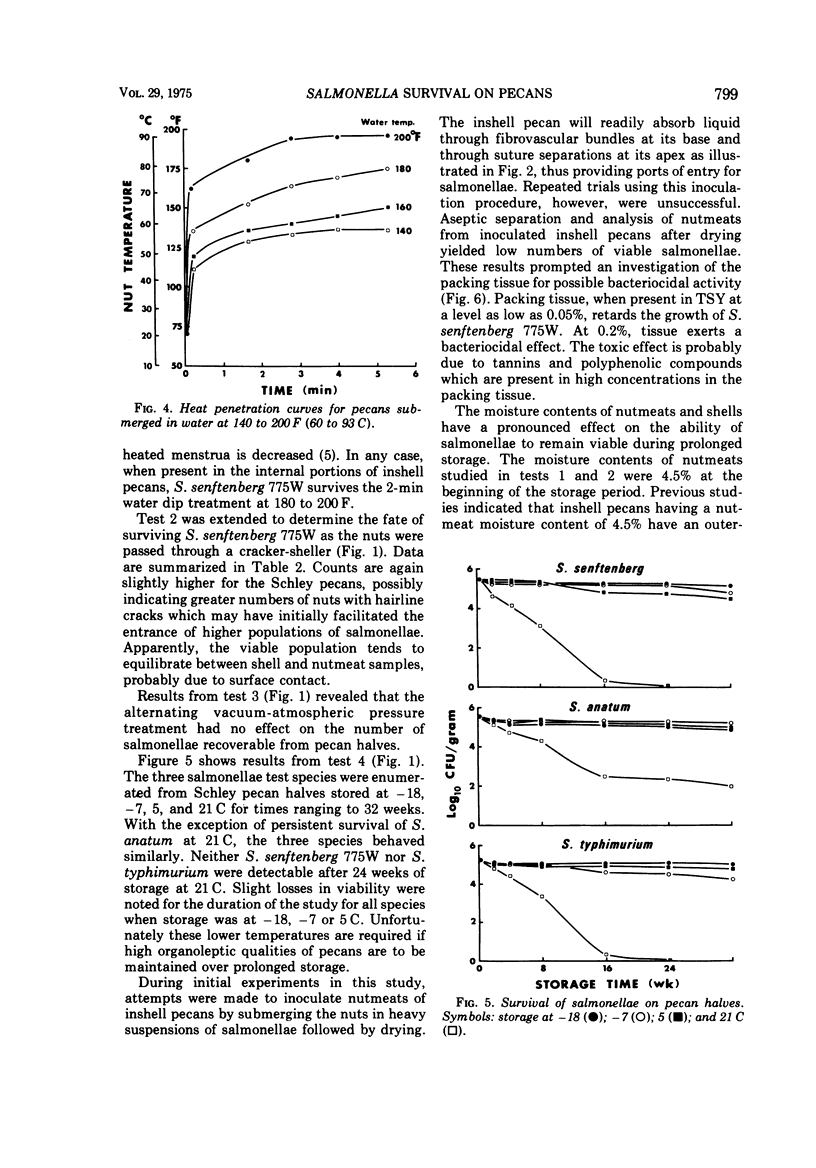
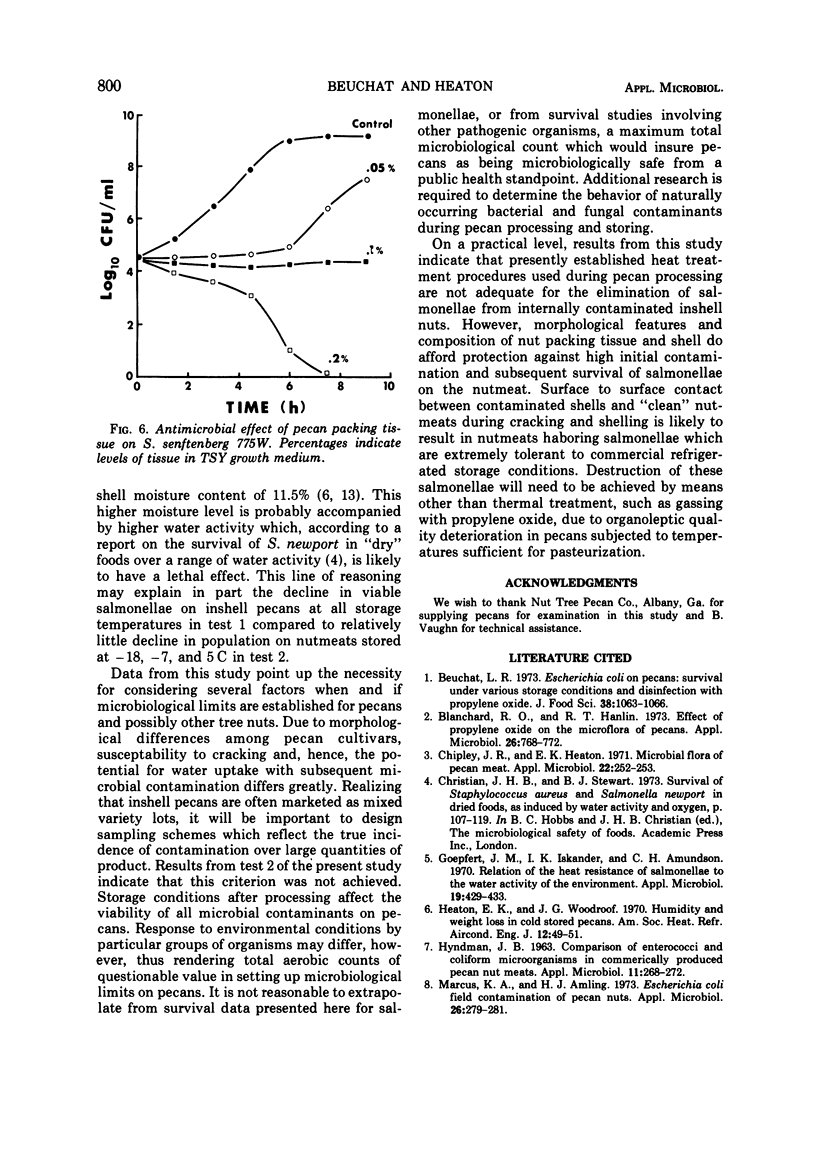
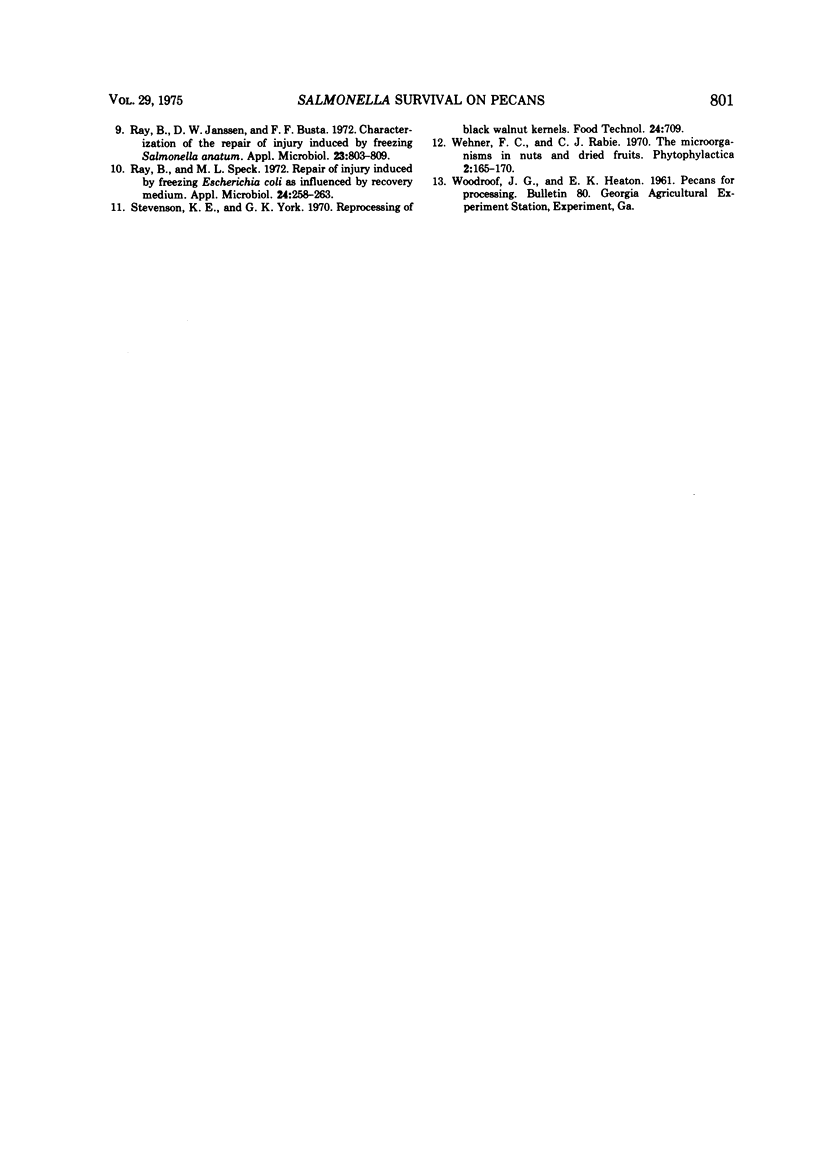
Selected References
These references are in PubMed. This may not be the complete list of references from this article.
- Blanchard R. O., Hanlin R. T. Effect of propylene oxide treatment on the microflora of pecans. Appl Microbiol. 1973 Nov;26(5):768–772. doi: 10.1128/am.26.5.768-772.1973. [DOI] [PMC free article] [PubMed] [Google Scholar]
- Chipley J. R., Heaton E. K. Microbial flora of pecan meat. Appl Microbiol. 1971 Aug;22(2):252–253. doi: 10.1128/am.22.2.252-253.1971. [DOI] [PMC free article] [PubMed] [Google Scholar]
- Goepfert J. M., Iskander I. K., Amundson C. H. Relation of the heat resistance of salmonellae to the water activity of the environment. Appl Microbiol. 1970 Mar;19(3):429–433. doi: 10.1128/am.19.3.429-433.1970. [DOI] [PMC free article] [PubMed] [Google Scholar]
- HYNDMAN J. B. Comparison of enterococci and coliform microorganisms in commercially produced pecan nut meats. Appl Microbiol. 1963 May;11:268–272. doi: 10.1128/am.11.3.268-272.1963. [DOI] [PMC free article] [PubMed] [Google Scholar]
- Marcus K. A., Amling H. J. Escherichia coli field contamination of pecan nuts. Appl Microbiol. 1973 Sep;26(3):279–281. doi: 10.1128/am.26.3.279-281.1973. [DOI] [PMC free article] [PubMed] [Google Scholar]
- Ray B., Janssen D. W., Busta F. F. Characterization of the repair of injury induced by freezing Salmonella anatum. Appl Microbiol. 1972 Apr;23(4):803–809. doi: 10.1128/am.23.4.803-809.1972. [DOI] [PMC free article] [PubMed] [Google Scholar]
- Ray B., Speck M. L. Repair of injury induced by freezing Escherichia coli as influenced by recovery medium. Appl Microbiol. 1972 Aug;24(2):258–263. doi: 10.1128/am.24.2.258-263.1972. [DOI] [PMC free article] [PubMed] [Google Scholar]


